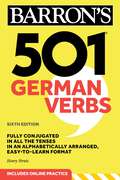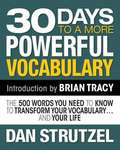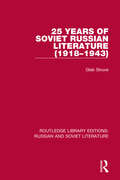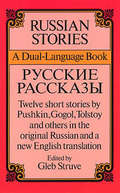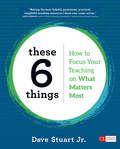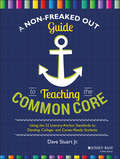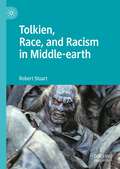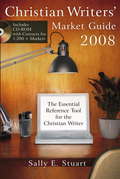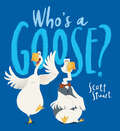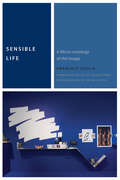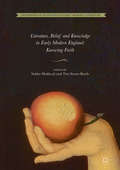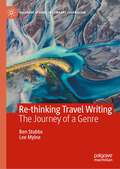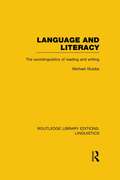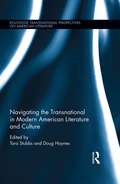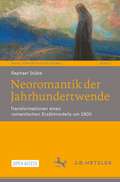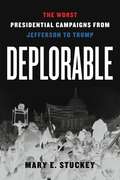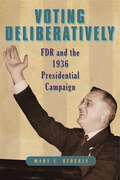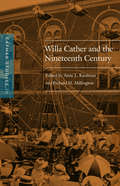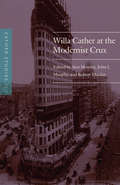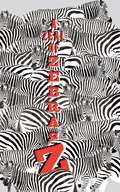- Table View
- List View
501 German Verbs, Sixth Edition (Barron's 501 Verbs)
by Henry StrutzPublisher's Note: Products purchased from 3rd party sellers are not guaranteed by the publisher for quality, authenticity, or access to any online entities included with the product.Choose Barron&’s for language learning–a trusted resource for over 50 years!This brand-new edition of 501 German Verbs provides language learners with fingertip access to a carefully curated selection of the 501 most common German verbs–in all tenses and moods! Each verb is listed alphabetically in chart form–one verb per page along with its English translation. Follow the clear, concise instruction, then take your language fluency to the next level with an online activity center.This comprehensive guide also includes:Updated example sentences for every verb accompanied by the English translationThe popular 55 Essential Verbs feature, with an in-depth look at usage and formation for the trickiest German verbsHundreds of verb practice drills with detailed answer explanationsNumerous reference sections, including an explanation of German pronunciation, special verb uses, frequently used expressions, and much moreOnline content includes:Audio program modeling native speaker rhythms and pronunciationFour practice quizzes to help you practice German sentence completion, conversational dialogue, and word completion exercisesAnswer explanations for all questions plus a timed test option and scoring
30 Days to a More Powerful Vocabulary: The 500 Words You Need to Know to Transform Your Vocabulary and Your Life
by Dan StrutzelA Bigger Vocabulary = A Brighter FutureWords. They're the foundation of nearly everything of value in our world. They have the power to create and the power to destroy. The power to inspire and to terrify. The power to enlighten and also to obscure. And, more specifically for you, they have the power to attract wealth and success and guarantee your brighter future. This is not hyperbole - it is based on rock-solid research.Studies show that those people with large vocabularies are smarter, wealthier, and happier than the average person - and substantially so. And here's the best news of all: a large vocabulary is not tied to your social status, your genes, or even your education level. It is a skill that can be learned - and it takes only 30 days.In this cutting-edge program, 30 Days to a More Powerful Vocabulary, personal development expert and English enthusiast Dan Strutzel will instruct, enlighten, and inspire you with a concentrated 30-day program that will teach you over 500 words. But, more than teaching you these words, the uniquely designed program will ensure that these words become a habit-knit part of your life - and with minimal effort on your part.Best of all, research shows that learning new words has an exponential effect on the size of your vocabulary - since learning one word naturally produces an association between two to three more words. In short, after reading and applying the system in this 30-day program, you will not only have a bigger vocabulary - you will have a brighter future!Here's just a sampling of what you'll learn: The 10 myths about building a dynamic vocabulary The secret behind the exponential effect of vocabulary building A 30-day program designed to maximize learning and comprehension of over 500 words The words you need to know about money and financial issues The words you need to know about persuading others The words you need to know about marriage, parenting, and other relationships The words you need to know about science The words you need to know to be a great conversationalist Why building a large, dynamic vocabulary is even more valuable in the digital age And much more!
25 Years of Soviet Russian Literature (Routledge Library Editions: Russian and Soviet Literature #1)
by Gleb StruveThis book, first published in 1944, is a comprehensive survey of post-revolutionary Russian literature up to the early 1940s. A huge range of writers are examined, and the analysis is made in the knowledge of the sometimes considerable pressure brought by the Government on writers in Soviet Russia. Links are made by the author between the writers being assessed, as well as to the Russian writers that had come before them. As a wide-ranging analysis of Soviet literature, this book has rarely been bettered.
Russian Stories: A Dual-Language Book (Dover Dual Language Russian)
by Gleb StruveThe story, or novella, as a literary genre has a much shorter history in Russia than in some Western countries, but it has nevertheless produced important works by some of the greatest names in Russian literature. This dual-language volume contains 12 such stories — memorable tales by Tolstoy, Dostoevsky, Pushkin, Chekhov, Gogol, Turgenev, Bunin, and other masters. Each selection is presented here in the original Russian with an excellent literal English translation on the facing pages.Also included are linguistic and cultural notes, a Russian-English vocabulary, study questions and more. In addition, Professor Struve has supplied an enlightening introduction to the Russian short story, as well as concise biographical/critical introductions to each selection. An especially helpful feature for students of Russian is the presence of stress accents in the Russian text, a feature usually found only in primers.
These 6 Things: How to Focus Your Teaching on What Matters Most (Corwin Literacy)
by Dave StuartDave Stuart Jr.’s work is centered on a simple belief: all students and teachers can flourish. These 6 Things is all about streamlining your practice so that you’re teaching smarter, not harder, and kids are learning, doing, and flourishing in ELA and content-area classrooms. In this essential resource, teachers will receive: Proven, classroom-tested advice delivered in an approachable, teacher-to-teacher style that builds confidence Practical strategies for streamlining instruction in order to focus on key beliefs and literacy-building activities Solutions and suggestions for the most common teacher and student “hang-ups” Numerous recommendations for deeper reading on key topics
These 6 Things: How to Focus Your Teaching on What Matters Most (Corwin Literacy)
by Dave StuartDave Stuart Jr.’s work is centered on a simple belief: all students and teachers can flourish. These 6 Things is all about streamlining your practice so that you’re teaching smarter, not harder, and kids are learning, doing, and flourishing in ELA and content-area classrooms. In this essential resource, teachers will receive: Proven, classroom-tested advice delivered in an approachable, teacher-to-teacher style that builds confidence Practical strategies for streamlining instruction in order to focus on key beliefs and literacy-building activities Solutions and suggestions for the most common teacher and student “hang-ups” Numerous recommendations for deeper reading on key topics
A Non-Freaked Out Guide to Teaching the Common Core
by Dave Stuart Jr.Implement the Common Core for ELA without all the stress A Non-Freaked Out Guide to Teaching the Common Core uses the often-neglected anchor standards to get to the heart of the Common Core State Standards (CCSS)--teaching students the skills they need to be college and career ready. Each anchor standard is broken down into its key points, and a discussion of each anchor standard's central purpose helps outline the context for each required skill. This easy-to-read guide gives educators the kind of clear explanations, examples, and strategies they need to feel comfortable teaching the CCSS, and shows how CCSS skills can be integrated into virtually any existing lesson plan. Getting a firm grasp of the anchor standards is the quickest way to start teaching the key concepts of the CCSS, and this user-friendly guide is designed to pave the way for both the first-time teacher and the experienced pro.
Tolkien, Race, and Racism in Middle-earth
by Robert StuartTolkien, Race, and Racism in Middle-earth is the first systematic examination of how Tolkien understood racial issues, how race manifests in his oeuvre, and how race in Middle-earth, his imaginary realm, has been understood, criticized, and appropriated by others. This book presents an analysis of Tolkien’s works for conceptions of race, both racist and anti-racist. It begins by demonstrating that Tolkien was a racialist, in that his mythology is established on the basis of different races with different characteristics, and then poses the key question “Was Tolkien racist?” Robert Stuart engages the discourse and research associated with the ways in which racism and anti-racism relate Tolkien to his fascist and imperialist contemporaries and to twenty-first-century neo-Nazis and White Supremacists—including White Supremacy, genocide, blood-and-soil philology, anti-Semitism, and aristocratic racism. Addressing a major gap in the field of Tolkien studies, Stuart focuses on race, racisms and the Tolkien legendarium.
Christian Writers' Market Guide 2008
by Sally E. StuartTheResource Guide to Getting Published A unique guide to publishing for Christian readers, theChristian Writers’ Market Guide 2008offers the most proven and comprehensive collection of ideas, resources, and contact information to the industry. For more than twenty years, theChristian Writers’ Market Guidehas delivered indispensable help to Christian writers, from a CD-ROM of the full text of the book so you can easily search for topics, publishers, and other specific names; to up-to-date listings of more than 1,200 markets for books, articles, stories, poetry, and greeting cards, including forty-three new book publishers, fifty-one new periodicals, and fifteen new literary agencies. Perfect for writers in every phase, this istheresource you need to get noticed–and published. “An indispensable tool. The reference you have to buy. ” Writers’ Journal “Essential for anyone seeking to be published in the Christian community. ” The Midwest Book Review “Stands out from the rest with its wealth of information and helpful hints. ” Book Reviews for Church Librarians Completely updated and revised theGuidefeatures more than… 1,200 markets for the written word * 675 periodicals * 405 book publishers * 240 poetry markets * 114 card and specialty markets * 37 e-book publishers * 120 literary agents * 332 photography markets * 98 foreign markets * 98 newspapers * 53 print-on-demand publishers * writers’ conferences and groups * pay rates and submission guidelines * more resources and tools for all types of writing and related topics. From the Trade Paperback edition.
Who's a Goose?
by Scott StuartFrom a barrel of monkeys to giraffes in a tower, this hilarious animal rhyming story is all about collective nouns!If one goose is a goose, and two gooses are geese, then why is one moose a moose, but two moose aren't meese?Learn alongside Bruce and Bill as they explore the hilarity of collective nouns!With a rhyming text, eye-catching artwork, and plenty of laugh-out-loud moments, serious Bruce and silly Bill are two gaggling geese sure to make kids giggle! A pitch-perfect read-aloud just right for group storytime.
Sensible Life: A Micro-ontology of the Image
by Scott Alan Stuart Kevin Attell Emanuele CocciaWe like to imagine ourselves as rational beings who think and speak, yet to live means first and foremost to look, taste, feel, or smell the world around us. But sensibility is not just a faculty: We are sensible objects both to ourselves and to others, and our life is through and through a sensible life. This book, now translated into five languages, rehabilitates sensible existence from its marginalization at the hands of modern philosophy, theology, and politics. Coccia begins by defining the ontological status of images. Not just an internal modification of our consciousness, an image has an intermediate ontological status that differs from that of objects or subjects. The book’s second part explores our interactions with images in dream, fashion, and biological facts like growth and generation. Our life, Coccia argues, is the life of images.
Literature, Belief and Knowledge in Early Modern England: Knowing Faith (Crossroads Of Knowledge In Early Modern Literature Ser. #1)
by Tim Stuart-Buttle Subha MukherjiThe primary aim of Knowing Faith is to uncover the intervention of literary texts and approaches in a wider conversation about religious knowledge: why we need it, how to get there, where to stop, and how to recognise it once it has been attained. Its relative freedom from specialised disciplinary investments allows a literary lens to bring into focus the relatively elusive strands of thinking about belief, knowledge and salvation, probing the particulars of affect implicit in the generalities of doctrine. The essays in this volume collectively probe the dynamic between literary form, religious faith and the process, psychology and ethics of knowing in early modern England. Addressing both the poetics of theological texts and literary treatments of theological matter, they stretch from the Reformation to the early Enlightenment, and cover a variety of themes ranging across religious hermeneutics, rhetoric and controversy, the role of the senses, and the entanglement of justice, ethics and practical theology. The book should appeal to scholars of early modern literature and culture, theologians and historians of religion, and general readers with a broad interest in Renaissance cultures of knowing.
Re-thinking Travel Writing: The Journey of a Genre (Palgrave Studies in Literary Journalism)
by Ben Stubbs Lee MylneThis book stems from the question that we as co-authors grappled with for the past 3-plus years while in our own periods of stasis during the pandemic: What place does the travel writing genre hold in a post-COVID world? With the massive interruptions to travel and travel writing across 2020-2023 as the pandemic forced us indoors and into isolation, it also raised many other pertinent questions about the practice of and future of travel writing. Part of the prompt for this book comes from the post-pandemic assumption that in an ecologically fraught, less mobile, and more uncertain world, there may not be a place for travel writing as we know it to exist in any meaningful way. We examine the problems and solutions apparent for travel writing as it engages with a period of re-thinking, prompted by the pandemic, though necessary for a plethora of other reasons as well. As academics and travel writing practitioners, with decades of experience in the field, we offer a unique perspectiveon this topic – as we have the in-the-field experience of professional travel writers, and we have the academic grounding to better understand the history, theoretical concerns and contradictions of the genre to provide a more in-depth perspective to our travel writing colleagues. This grounding allows us to access a unique and valuable perspective for Re-thinking Travel Writing: The Journey of a Genre for academics, aspiring travel writers and contemporary colleagues in the field.
Language and Literacy: The Sociolinguistics of Reading and Writing (Routledge Library Editions: Linguistics)
by Michael StubbsDespite a vast amount of study, literacy is still a very confused topic, which requires the integration of findings from different areas. Reading and writing are psychological skills, but they are also linguistic skills (since people read and write meaningful language) and social skills (since written language serves particular functions in different societies). In this book Michael Stubbs provides a basis for a sociolinguistic theory of literacy. He believes that a systematic theory of literacy must be based on an understanding of a number of factors, such as the relationship between written and spoken language, including how English spelling works and how it is related to spoken English. Also of paramount importance are the social, educational and technological pressures on written language, which are particularly powerful in the case of an international language like English; the social and communicative functions which written language serves – largely administrative and intellectual functions; and the variability of spoken language and the relative uniformity of written language. The book also discusses the arguments behind deprivation theory as an explanation of educational failure. Reading failure is not well understood, but the author stresses that a vital element is the attitude of teachers towards the child’s language. He emphasizes that it is important that teachers should understand as much as possible about the relationship between written language and the child’s spoken language. Such understanding, he argues, can only increase tolerance of regional, social and ethnic diversity in language.
Navigating the Transnational in Modern American Literature and Culture: Axes of Influence (Routledge Transnational Perspectives on American Literature)
by Tara Stubbs Doug HaynesThis study develops the important work carried out on American literature through the frameworks of transnational, transatlantic, and trans-local studies to ask what happens when these same aspects become intrinsic to the critical narrative. Much cultural criticism since the 1990s has sought to displace perceptions of American exceptionalism with broader notions of Atlanticism, transnationalism, world-system, and trans-localism as each has redefined the US and the world more generally. This collection shows how the remapping of America in terms of global networks, and as a set of particular localities, or even glocalities, now plays out in Americanist scholarship, reflecting on the critical consequences of the spatial turn in American literary and cultural studies. Spanning twentieth and twenty-first century American poetry, fiction, memoir, visual art, publishing, and television, and locating the US in Caribbean, African, Asian, European, and other contexts, this volume argues for a re-modelling of American-ness with the transnational as part of its innate rhetoric. It includes discussions of travel, migration, disease, media, globalization, and countless other examples of inflowing. Essays focus on subjects tracing the contemporary contours of the transnational, such as the role of the US in the rise of the global novel, the impact of Caribbean history on American thought (and vice versa), transatlantic cultural and philosophical genealogies and correspondences, and the exchanges between the poetics of American space and those of other world spaces. Asking questions about the way the American eye has traversed and consumed the objects and cultures of the world, but how that world is resistant, this volume will make an important contribution to American and Transatlantic literary studies.
Neoromantik der Jahrhundertwende: Transformationen eines romantischen Erzählmodells um 1900 (Neue Romantikforschung #2)
by Raphael StübeDieses Open-Access-Buch beschreibt die rege Wiederaufnahme des Romantischen in der literarischen Landschaft um 1900. Es zeichnet die vergessene Diskursgeschichte einer sogenannten ‚Neuromantik‘ nach, um anschließend zu analysieren, was genau sich in diesen Texten im Vergleich zur historischen Romantik verändert hat. Die Neoromantik der Jahrhundertwende lässt sich damit als eine folgenreiche Station in der internationalen Kulturgeschichte wiederentdecken, die zugleich das Romantik-Bild des 20. Jahrhunderts entscheidend geprägt hat.
Deplorable: The Worst Presidential Campaigns from Jefferson to Trump
by Mary E. StuckeyPolitical campaigns in the United States, especially those for the presidency, can be nasty—very nasty. And while we would like to believe that the 2020 election was an aberration, insults, invective, and yes, even violence have characterized US electoral politics since the republic’s early days. By examining the political discourse around nine particularly deplorable elections, Mary E. Stuckey seeks to explain why. From the contest that pitted Thomas Jefferson against John Adams in 1800 through 2020’s vicious, chaotic matchup between Donald Trump and Joe Biden, Stuckey documents the cycle of despicable discourse in presidential campaigns. Looking beyond the character and the ideology of the candidates, Stuckey explores the broader political, economic, and cultural milieus in which each took place. In doing so, she reveals the conditions that exacerbate and enable our worst political instincts, producing discourses that incite factions, target members of the polity, encourage undemocratic policy, and actively work against the national democratic project.Keenly analytical and compulsively readable, Deplorable provides context for the 2016 and 2020 elections, revealing them as part of a cyclical—and perhaps downward-spiraling—pattern in American politics. Deplorable offers more than a comparison of the worst of our elections. It helps us understand these shameful and disappointing moments in our political history, leaving one important question: Can we avoid them in the future?
Deplorable: The Worst Presidential Campaigns from Jefferson to Trump
by Mary E. StuckeyPolitical campaigns in the United States, especially those for the presidency, can be nasty—very nasty. And while we would like to believe that the 2020 election was an aberration, insults, invective, and yes, even violence have characterized US electoral politics since the republic’s early days. By examining the political discourse around nine particularly deplorable elections, Mary E. Stuckey seeks to explain why. From the contest that pitted Thomas Jefferson against John Adams in 1800 through 2020’s vicious, chaotic matchup between Donald Trump and Joe Biden, Stuckey documents the cycle of despicable discourse in presidential campaigns. Looking beyond the character and the ideology of the candidates, Stuckey explores the broader political, economic, and cultural milieus in which each took place. In doing so, she reveals the conditions that exacerbate and enable our worst political instincts, producing discourses that incite factions, target members of the polity, encourage undemocratic policy, and actively work against the national democratic project.Keenly analytical and compulsively readable, Deplorable provides context for the 2016 and 2020 elections, revealing them as part of a cyclical—and perhaps downward-spiraling—pattern in American politics. Deplorable offers more than a comparison of the worst of our elections. It helps us understand these shameful and disappointing moments in our political history, leaving one important question: Can we avoid them in the future?
Voting Deliberatively: FDR and the 1936 Presidential Campaign (Rhetoric and Democratic Deliberation #12)
by Mary E. StuckeyThe 1932 election of Franklin Delano Roosevelt seemed to hold the promise of Democratic domination for years to come. However, leading up to the 1936 election, persistent economic problems, a controversial domestic agenda, and the perception of a weak foreign policy were chipping away at public support. The president faced unrelenting criticism from both the Left and the Right, and it seemed unlikely that he would cruise to the same clear victory he enjoyed in 1932. But 1936 was yet another landslide win for FDR, which makes it easy to forget just how contested the campaign was. In Voting Deliberatively, Mary Stuckey examines little-discussed components of FDR’s 1936 campaign that aided his victory. She reveals four elements of this reelection campaign that have not received adequate attention: the creation of public opinion, the attention paid to local organizations, the focus on specific kinds of interests, and the public rhetoric that tied it all together. Previous studies of the 1936 presidential election discuss elements such as FDR’s vulnerability before the campaign and the weakness of Republican candidate Alf Landon. But these histories pay little attention to the quantity and quality of information Roosevelt acquired, the importance of organizations such as the Good Neighbor League and the Committee of One, the mobilization of the vote, and the ways in which these organizational strategies fused with Roosevelt’s rhetorical strategies. Stuckey shows how these facets combined in one of the largest victories in Electoral College history and provided a template for future victory.
Cather Studies, Volume 10: Willa Cather and the Nineteenth Century (Cather Studies)
by Cather Studies Richard H. Millington Anne L KaufmanWilla Cather and the Nineteenth Century explores, with textual specificity and historical alertness, the question of how the cultures of the nineteenth century—the cultures that shaped Willa Cather’s childhood, animated her education, supplied her artistic models, generated her inordinate ambitions, and gave embodiment to many of her deeply held values—are addressed in her fiction. In two related sets of essays, seven contributors track within Cather’s life or writing the particular cultural formations, emotions, and conflicts of value she absorbed from the atmosphere of her distinct historical moment; their ten colleagues offer a compelling set of case studies that articulate the manifold ways that Cather learned from, built upon, or resisted models provided by particular nineteenth-century writers, works, or artistic genres. Taken together with its Cather Studies predecessor, Willa Cather and Modern Cultures, this volume reveals Cather as explorer and interpreter, sufferer and master of the transition from a Victorian to a Modernist America.
Cather Studies, Volume 11: Willa Cather at the Modernist Crux (Cather Studies)
by Cather Studies Ann Moseley John J. Murphy Robert ThackerWilla Cather at the Modernist Crux examines Willa Cather’s position in time, in aesthetics, and in the world. Born a Victorian in 1873, Cather made herself a modernist through the poems, stories, and novels she wrote and published into the twentieth century. Beginning with a prologue locating Cather’s position, this volume of Cather Studies offers three sets of related essays. The first section takes up Cather’s beginnings with her late nineteenth-century cultural influences. The second section explores a range of discernible direct connections with contemporary artists (Howard Pyle, Frederic Remington, and Ernest Blumenschein) and others who figured in the making of her texts. The third section focuses on The Song of the Lark, a novel that confirms Cather’s shift westward and elaborates her emergent modernism. An epilogue by the editors of The Selected Letters of Willa Cather addresses how the recent availability of these letters has transformed Cather studies. Altogether, these essays detail Cather’s shaping of the world of the early twentieth century and later into a singular modernism born of both inherited and newer cultural traditions.
A Zeal of Zebras
by Woop StudiosAn embarrassment of pandas, a galaxy of starfish, a shiver of sharks...these are all collective nouns used to describe their groups. Woop Studios, acclaimed for their work on the Harry Potter movies, has illustrated these quirky phrases, creating a series of extraordinarily beautiful art that has been collected here for the first time. The colorful introduction to animals and the alphabet is accessible for young children, while the gorgeous, whimsical art and clever wordplay make it perfect for design-savvy parents and inspired gift givers. Longer than the standard picture book, with high design and production values, this is a volume readers will want on their coffee tables in addition to their child's bookshelf.
A Compendium of Collective Nouns: From an Armory of Aardvarks to a Zeal of Zebras
by Woop Studios Jason SacherThis illustrated guide compiles over 2,000 collective nouns and brings them to life in stunningly colorful, graphic artwork from the design dynamos at Woop Studios. Chock-full of treasures of the English language, the diversity of terms collected here covers topics from plants and animals (a parade of elephants, an embarrassment of pandas) to people and things (a pomposity of professors, an exultation of fireworks) and range from the familiar (a pride of lions) to the downright obscure (an ooze of amoebas). Pronunciations, definitions, etymologies, and historical anecdotes make this beautiful book an entertaining read, a standout reference, and a visual treat. Language lovers and art appreciators alike will be captivated by this gem, rich in word and image.
StudySync Core ELA Grade 7: Florida Reading and Writing Companion, Units 1-6
by StudySyncStudySync Core ELA Grade 7, Florida Reading and Writing Companion, Units 1-6
StudySync [Grade 8], Reading & Writing Companion [Unit 1]: Suspense!
by StudySyncNIMAC-sourced textbook
